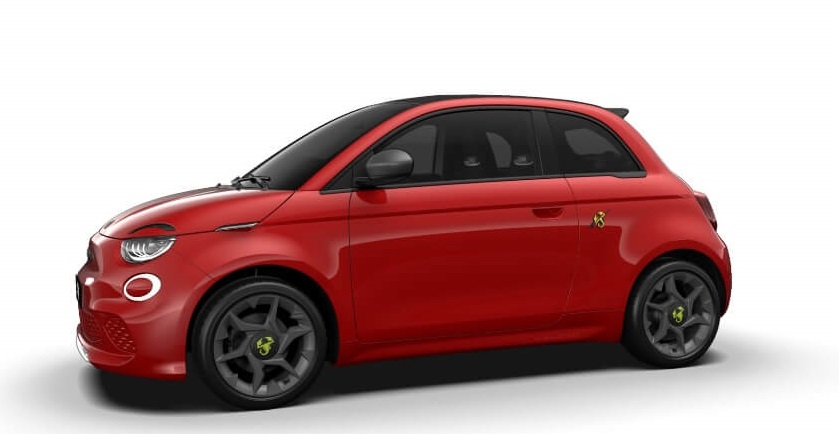Key specs
Abarth 500e (Convertible) 500e Cabriolet 2023,2024,2025,2026
What is the body type, Abarth-500e Cabriolet-42 kWh (155 Hp) Electric-2023?
Convertible, 2 Doors, 4 Seats
How fast is the car, Abarth-500e Cabriolet-42 kWh (155 Hp) Electric-2023?
155 km/h 96.31 mph
What is the drivetrain, Abarth-500e Cabriolet-42 kWh (155 Hp) Electric-2023?
Front wheel drive,
How long is this vehicle, Abarth-500e Cabriolet-42 kWh (155 Hp) Electric-2023?
3673 mm
144.61 in.
How wide is the vehicle, Abarth-500e Cabriolet-42 kWh (155 Hp) Electric-2023?
#N/D
What is the curb weight, Abarth-500e Cabriolet-42 kWh (155 Hp) Electric-2023?
#N/D
Abarth 500e (Convertible) 500e Cabriolet 2023,2024,2025,2026 Specs
General information
| Brand |
Abarth |
| Model |
500e (Convertible) |
| Version |
500e Cabriolet |
| Engine version |
42 kWh (155 Hp) Electric |
| Year production start |
2023 |
| Vehicle type |
Convertible |
| Acceleration 0 - 100 kmh sec |
9 sec |
| Overall length mm - inch |
3673 mm
144.61 in.
|
| Doors |
2 |
| Top Speed |
155 km/h 96.31 mph |
Engine specs
| Fuel type |
Electricity |
| Powertrain architecture |
BEV (Electric Vehicle) |
| Electric motor power |
155 Hp
|
| Electric motor torque |
235 Nm 173.33 lb.-ft.
|
| Total available power |
155 Hp
|
| Totale available torque |
235 Nm 173.33 lb.-ft.
|
Transmission and Drive system
| Drive configuration |
Front wheel drive
|
Brakes
| Front brakes |
Ventilated Disc, 281x28 mm |
| Rear brakes |
Disc, 278 mm |
| Anti-lock brake system |
ABS (Anti-lock braking system) |
Steering
| Steering type |
Steering rack and pinion |
| Turning diameter m - ft |
9.7 m
31.82 ft.
|
Suspension
| Front suspension |
Independent type McPherson |
| Rear suspension |
Torsion |
Wheels & Tyres
| Wheels size |
205/45 R17
|
| Wheels rims |
17 |
Dimensions
| Overall length mm - inch |
3673 mm
144.61 in.
|
| Overall height mm -inch |
1518 mm
59.76 in.
|
| Wheelbase mm - inch |
2322 mm
91.42 in.
|
Engine type
Electric
https://www.thecarspec.com/components/engine/electric

